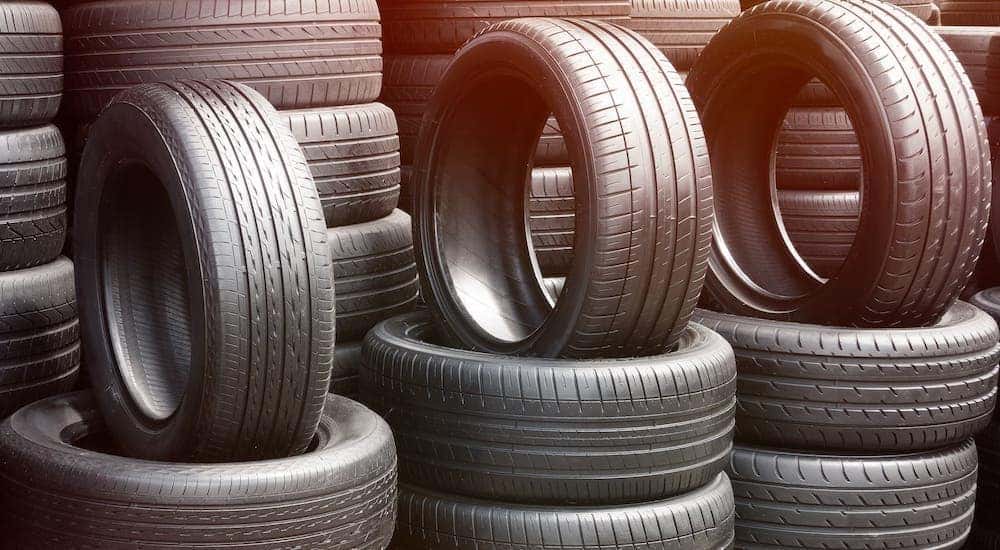Tire Solution: Understanding Tire Stress Monitoring Solutions
Recognizing Tire Stress Monitoring Equipments (TPMS) is a vital aspect of maintaining optimal vehicle efficiency and safety and security on the roadway. With innovations in auto modern technology, TPMS has ended up being a common function in contemporary cars, offering real-time details on tire pressure levels.

Significance of TPMS
The relevance of Tire Stress Surveillance Solutions (TPMS) hinges on their ability to improve vehicle security and efficiency via real-time monitoring of tire stress levels. Maintaining the proper tire stress is vital for ensuring optimum handling, stopping, and general safety of a lorry. TPMS supplies chauffeurs with immediate responses on any type of underinflated or overinflated tires, allowing for prompt modifications to be made.
Components of TPMS
Comprising different essential aspects, a Tire Stress Monitoring System (TPMS) functions as an advanced security attribute in contemporary automobiles. The major parts of a TPMS include sensors, a control module, and a caution indication. Sensing units are generally located in the tire valve stem or affixed to the wheel assembly, where they gauge tire pressure and transfer information to the control component. If it identifies substantially reduced stress in any of the tires, the control component procedures this info and activates a caution. The caution indication, frequently a symbol on the dashboard, alerts the chauffeur to inspect the damaged tire or tires. Some progressed TPMS designs likewise display the actual tire pressure readings for each and every tire, giving vehicle drivers with real-time details to guarantee optimal tire efficiency and security. By checking tire stress continuously, TPMS helps avoid accidents, lowers tire wear, and boosts fuel performance, making it an essential component for lorry security and performance.
Types of TPMS

On the other hand, indirect TPMS relies upon the automobile's wheel rate sensing units to keep track of tire stress. This system spots underinflation by comparing the rotational speeds Your Domain Name of the wheels. Indirect TPMS is much less expensive than straight TPMS, as it utilizes existing sensors within the car.
While direct TPMS provides much more precise analyses, indirect TPMS is simpler in design and usually needs much less maintenance. Both systems have their constraints and benefits, and the selection in between them usually depends on aspects such as expense, automobile make, and individual choice. Recognizing the distinctions in between these two kinds of TPMS can help vehicle proprietors make informed decisions concerning tire maintenance and safety.
TPMS Upkeep Tips
Conduct routine checks on the tire pressure degrees and compare them with the TPMS readings to ensure they are regular. During tire rotation or replacement, make sure that the TPMS elements are managed carefully to stop any type of possible damages. If the reference TPMS alerting light illuminates on the control panel, address the issue promptly by checking the tire pressures you could look here and the total system for any type of mistakes.
Benefits of Proper Tire Pressure
Preserving appropriate tire pressure, as highlighted in TPMS Maintenance Tips, is important for gaining the various benefits connected with ideal tire stress levels. Furthermore, appropriate tire pressure makes certain even tire wear, prolonging the life-span of the tires and advertising safer driving problems. In final thought, the advantages of correct tire pressure go beyond just tire durability; they encompass enhanced gas performance, enhanced safety, much better vehicle performance, and general driving convenience.
Verdict
In verdict, understanding tire pressure surveillance systems (TPMS) is essential for preserving ideal tire pressure and making certain lorry safety. By acknowledging the relevance of TPMS, knowing with its parts, recognizing the various kinds offered, sticking to correct upkeep suggestions, and recognizing the benefits of keeping correct tire stress, motorists can improve their driving experience and extend the life expectancy of their tires. Proper tire pressure is essential to efficient and secure lorry operation.
